How to grow clematis in pots – expert tips for planting and caring for these beautiful container blooms
Add clematis in containers to your patio or deck this summer for a beautiful way to brighten the space
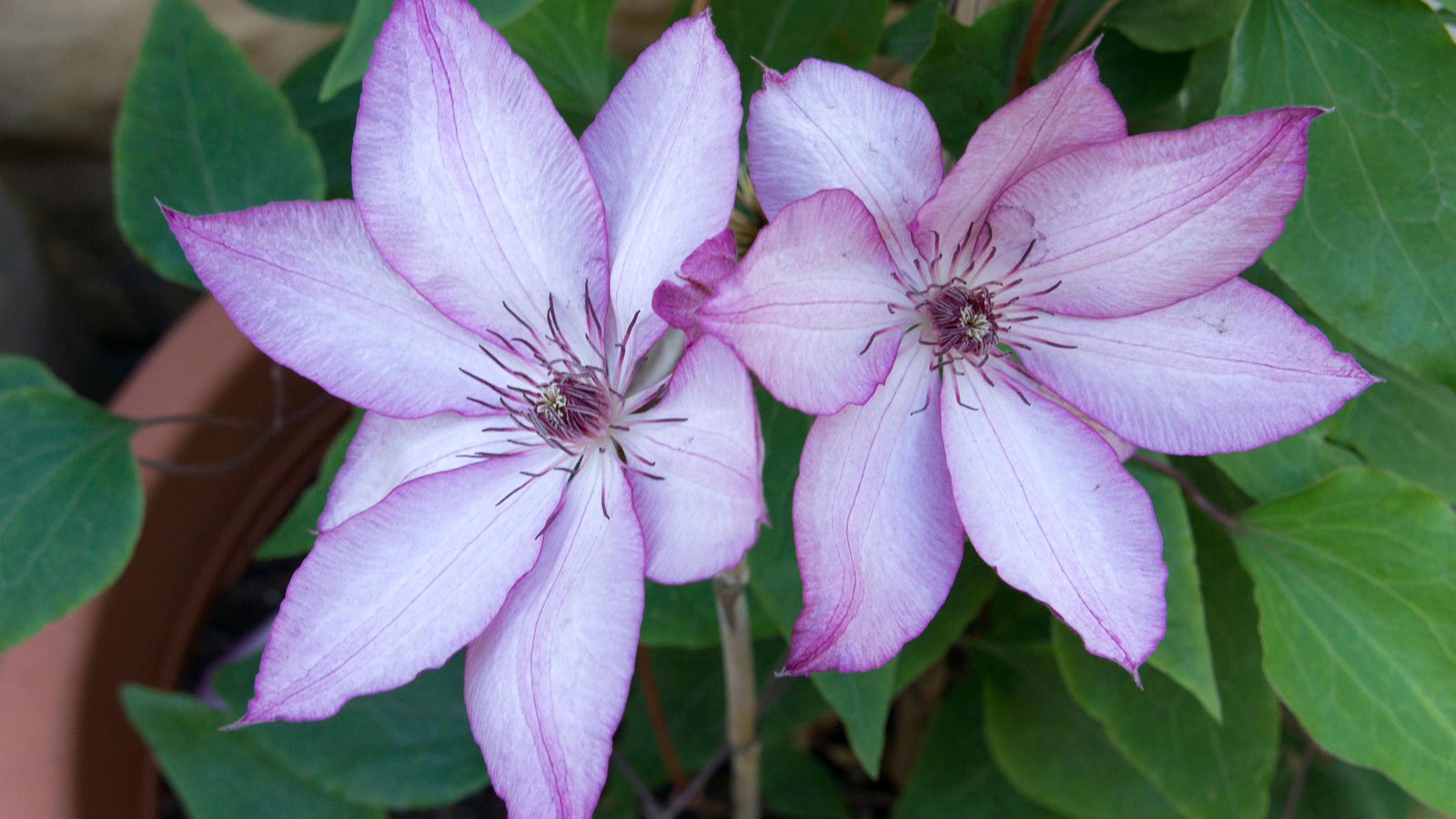

Q: I love clematis as there are so many different flower shapes, sizes and colors to choose from. I would like to plant them in pots to add something pretty to my outdoor seating space and use their height to make it feel a little more private. Are there any tips for growing clematis in containers I need to know to keep them looking their best?
A: Clematis are a great choice and one of the best climbing plants for your backyard as there's such a wide variety to choose from. Growing them this way is similar to how you'd grow them in the ground and lets those with limited garden space enjoy these beautiful plants too.
There are a few things to bear in mind, however, when learning how to grow clematis in pots if you want to be guaranteed the best display possible.
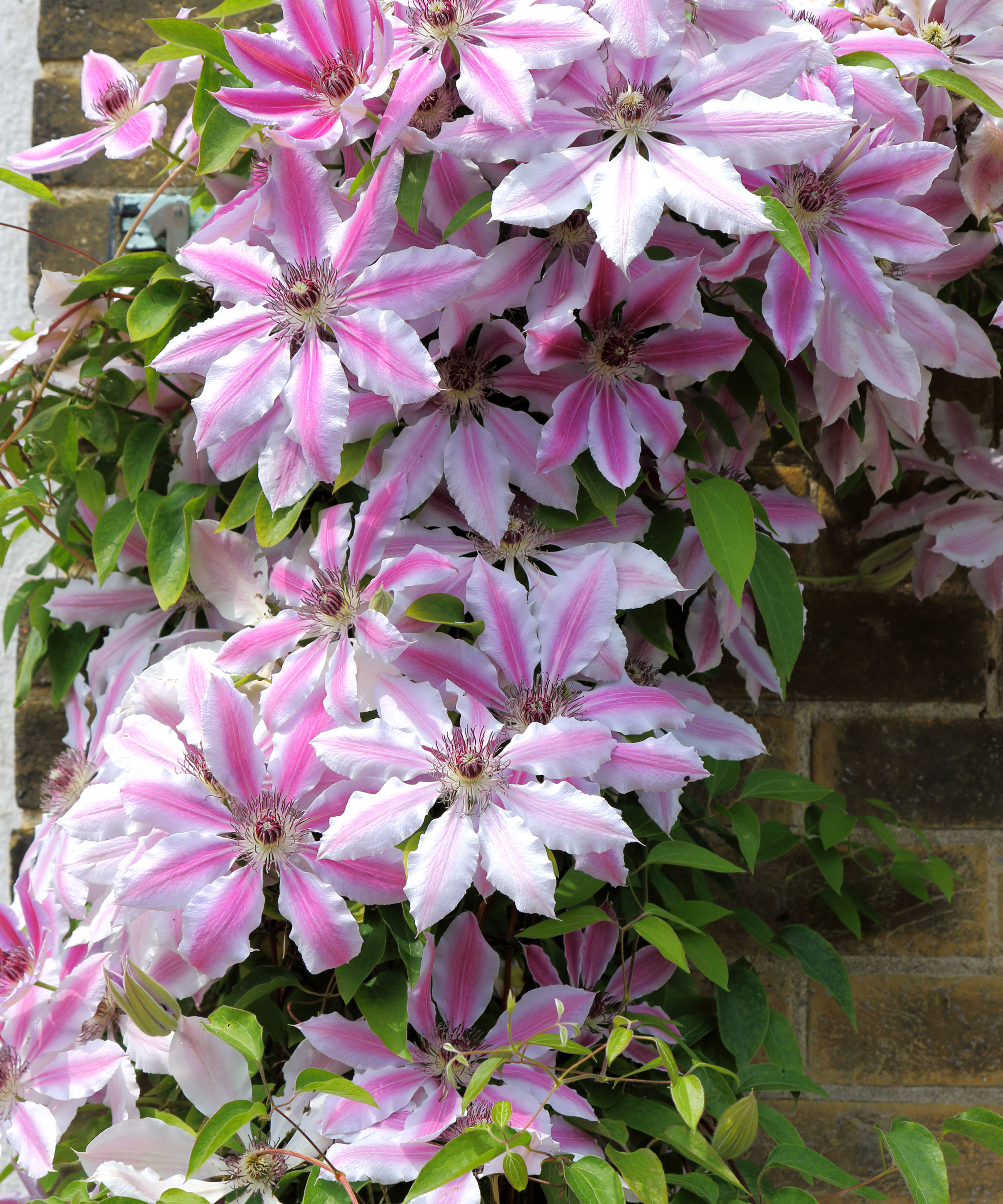
Clematis 'Nelly Moser' is a great choice for growing in a container
How and when to plant clematis in pots
The best time of year to plant clematis in a pot as part of your container gardening ideas is in spring or early fall, as warm, moist soil at these times of year helps the roots get established. 'Compact clematis grow happily in containers, as long as they are regularly watered and fed,' says Anne Swithinbank, gardening expert for Homes & Gardens. 'You need to make sure you soak the roots well prior to planting or potting too.' The plant should be plunged into a bucket of water while still in its original pot and left to soak for 10 minutes.
Next transfer the plant to a container of your choice at least 17 inches deep with a diameter of 15 inches, larger if possible. 'The container should be large enough to fit your fingers between the rootball and sides,' says Anne. There should also be sufficient drainage holes. 'A good layer of crocks, small stones or pea gravel should be placed in the bottom of the container to a depth of about 4 inches to help drainage,' says gardening expert John Negus.
Fill the container to within 3 inches of the rim with a suitable potting soil. Ease the rootball of your clematis plant out of the pot and nestle into the compost with the root crown buried below the surface of the soil.
'Finally, stand the pot on "feet" to ensure that surplus moisture freely drains away, and water copiously to ensure that roots are in close contact with the compost,' says John. These UFelice pot feet from Amazon are a simple non-slip rubber design, or if you prefer something more decorative for your flowering climber, this metal plant pot stand from Amazon is suitable for outdoor use and comes in a range of sizes.

As a trained horticulturalist, garden writer and broadcaster, and the author of multiple books, Anne Swithinbank has an extensive knowledge about plants. Here, she shares her top picks for camellias – from a frilly yellow variety to one with red and white stripes.

John has been a garden journalist for over 50 years and regularly answers readers' questions in Amateur Gardening magazine. He has also written four books and has delivered many talks over the years on horticulture.
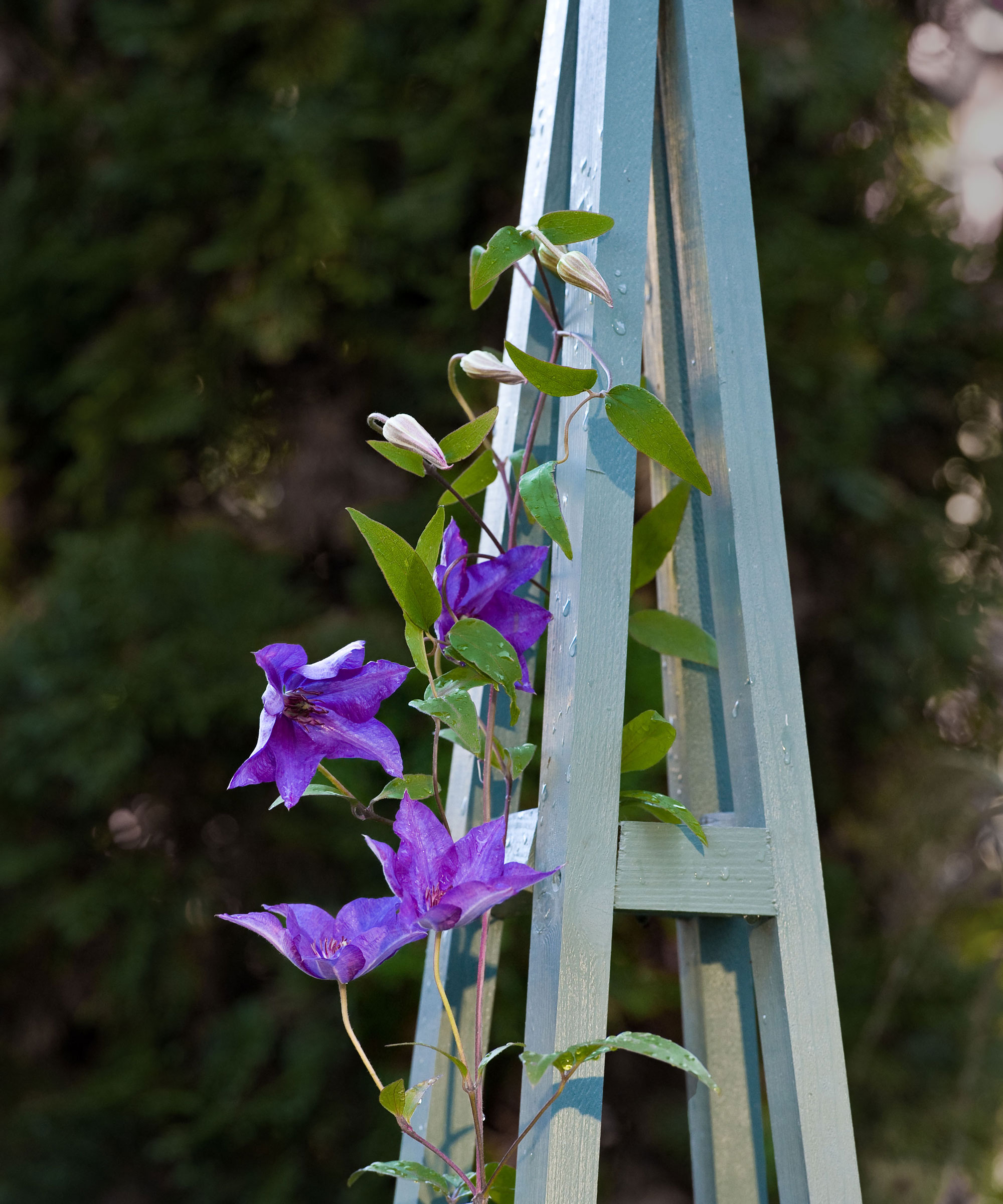
Clematis 'The President' will make rapid growth if you provide it with a suitable support
Where to grow clematis in pots
Although most clematis like a sunny or partly shaded spot, there are varieties that will suit every aspect.
'In order to successfully grow clematis in pots, choose the right location,' says Alex Tinsman, gardener at How To Houseplant. 'Clematis plants need plenty of sunlight to thrive, but they can also benefit from some shade during the hottest part of the day. Choose a location that receives at least six hours of sunlight per day.'
Clematis make excellent patio plants for a sunny corner of your paved space, especially if they have a wall or fence they can grow against. Alternatively, consider a planter box with trellis and use your clematis as a way of creating some patio privacy.
It's a good idea to protect clematis from extreme temperatures too. 'They can be sensitive to extreme temperatures, so be sure to protect plants from frost as well as intense heat,' says Alex.
'Keep your clematis in a relatively sheltered position, and in cold weather, consider wrapping the sides of the container,' says Anne Swithinbank. 'In colder regions, bring under unheated glass to keep it protected.'
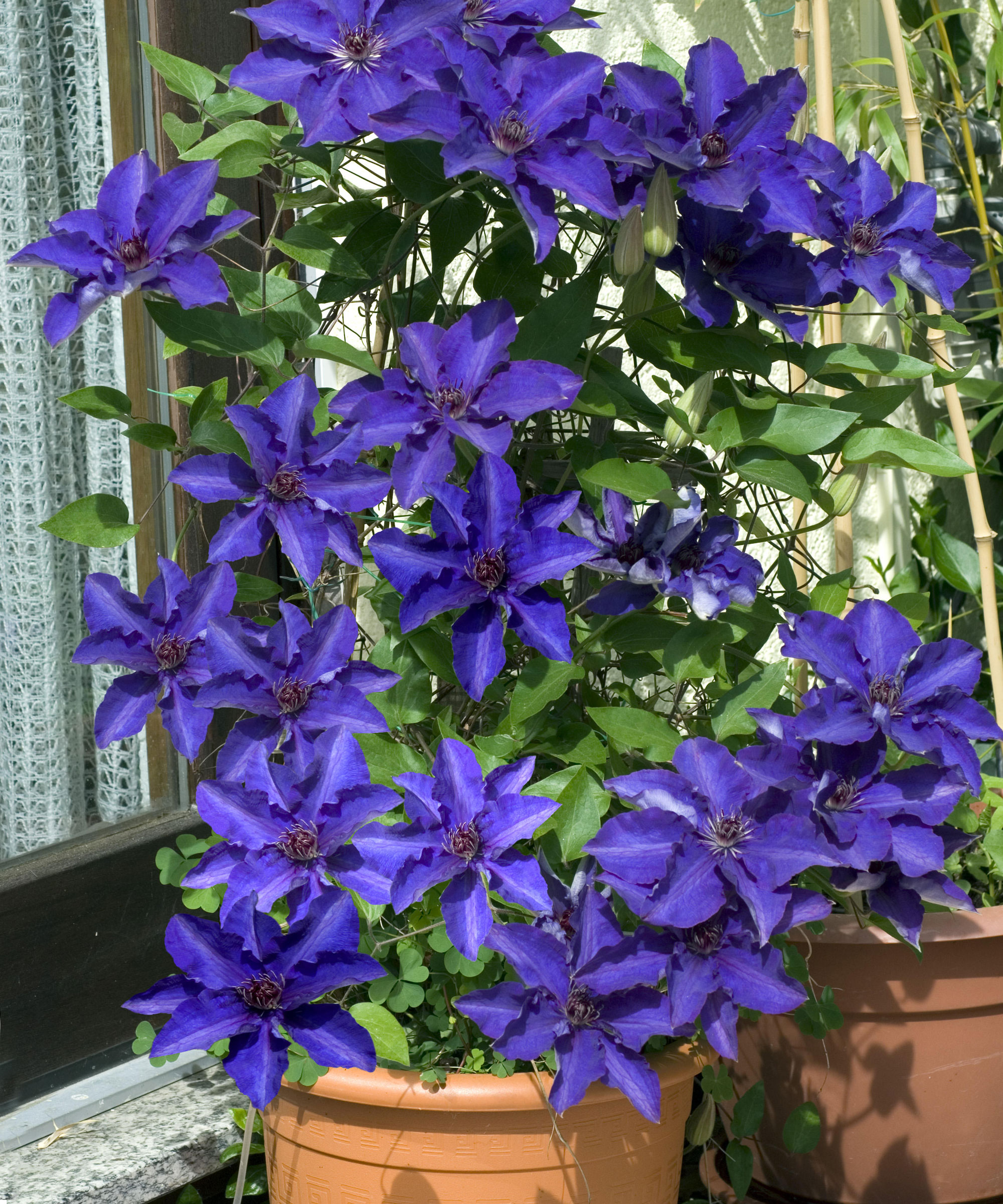
Clematis 'The President' has two flushes of flowers in summer
How to care for clematis in pots
One of the first things to consider is how you're going to support a clematis growing in a container. The easiest way is to insert a cane in the compost and attach it to the main support such as a trellis or another host plant if you're planning to grow it in this way.
'Providing your clematis with a climbing frame is key,' says Anne Swithinbank. 'An easy option is to perhaps insert four canes or twiggy sticks around the edge of the pot and secure them over the center so they are around 6ft tall. Pot on at least every other year, until a final pot size is reached.'
If your clematis is growing as a free-standing container plant find a metal or wooden support for it, such as this metal obelisk from Amazon.
Throughout the growing season from early April until mid-September container grown clematis need regular tying in of new growth. Knowing when to water plants is essential too. A regular watering routine is necessary whenever the compost is dry to the touch, as well as everyday in mid-summer unless it has rained.
A balanced feed with nitrogen and potash suitable for clematis is best for the growing season and can be incorporated when watering. When foliage has died back, prune your clematis by removing all dead and weak stems to the point where strong leaf buds are visible.
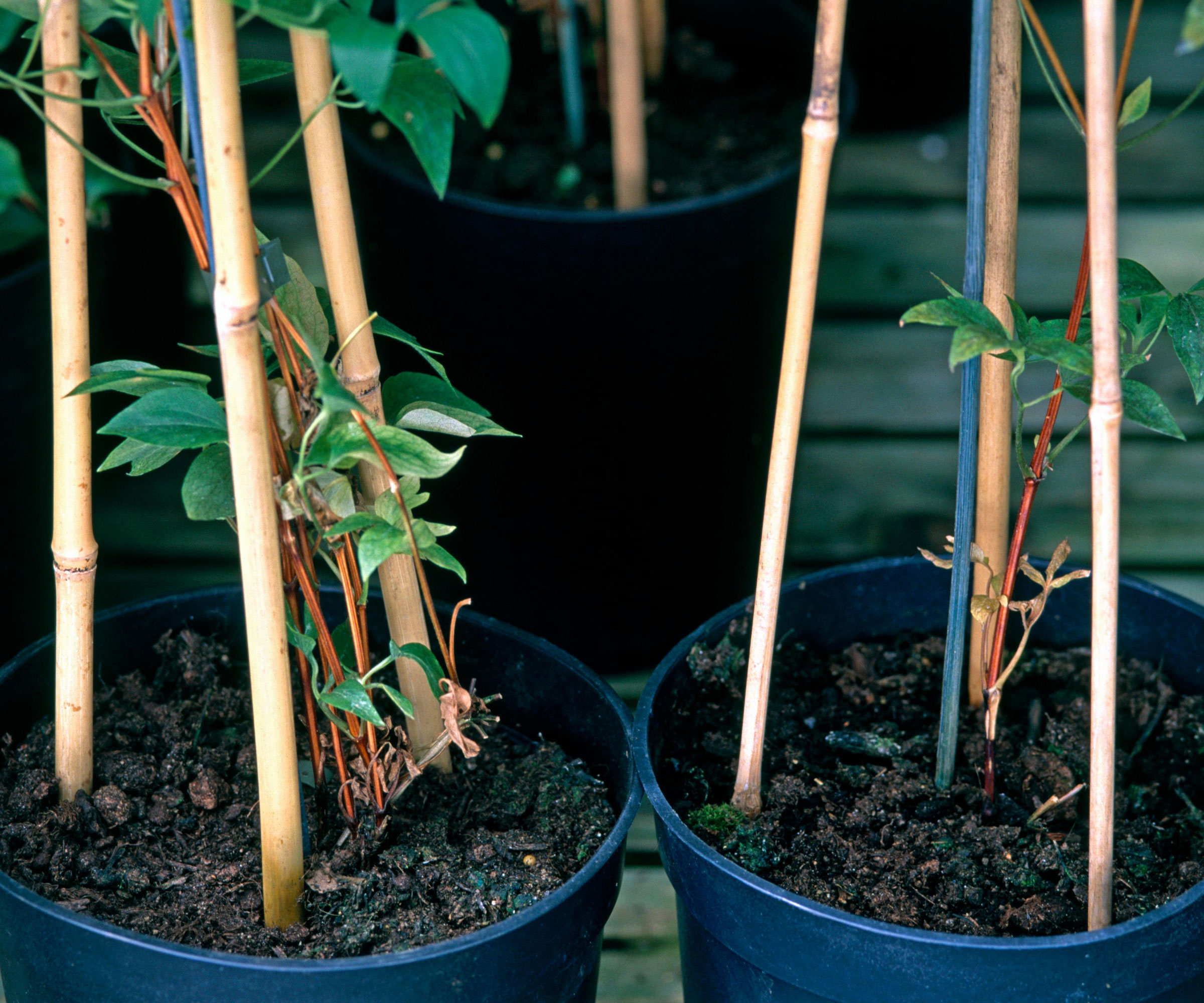
Tie clematis plants to sturdy canes and check for stray tendrils regularly and tie them in too
Best varieties of clematis for pots
'It's always a joy to have clematis in the garden, as there are so many varieties,' says John Negus. 'Some compact varieties can be happily grown in containers, and if you choose carefully you can have flowers all year.'
If you want a container grown clematis for a small patio or balcony garden, be sure you know the best clematis varieties to choose. They should be naturally compact and bushy types for best results. The alpina and macropetala varieties, and evergreen types (with the exception of armandii) all make good pot-grown clematis.
Look for early large-flowered cultivators such as 'Miss Bateman' (available from Amazon) which are compact in growth and produce flowers in one flush during May and early June. If you're looking for a variety that flowers from June onwards try 'Nelly Moser' (available from Fast Growing Trees) or 'The President' (from Nature Hills), both of which have a further crop of flowers in late summer.
The experts at Amateur Gardening magazine also recommend clematis 'Alaina' (available at Nature Hills), which is a member of the Boulevard group of clematis that are bred for small spaces. It flowers in two waves: May to June and August to September, producing large magenta-pink blooms and is happy in part shade.

Clematis 'Miss Bateman' is a compact grower covered in blooms
FAQs
Why is my container-grown clematis not thriving?
Learning how to grow clematis in pots isn't too difficult, especially as you can keep your eye on it when it's in a container. But if problems occur they are generally connected with careless pruning, especially at the wrong time of year. If you remove the part of the plant that produces flowers naturally this can prevent flowering.
'There could be several reasons why a clematis in a pot isn't thriving,' says Tony O'Neill, gardening expert and author at Simplify Gardening. 'One possibility is that the pot is too shallow, restricting root growth. Another factor could be inadequate sunlight, as clematis plants require at least six hours of sunlight a day. Additionally, poor-quality or poorly-draining soil, improper watering, and lack of support for the plant's climbing habit could all contribute to a struggling clematis.'
As well as providing you with lovely blooms right through summer, if you're looking for some extra garden screening, clematis in containers are one of the prettiest solutions you can add to your yard.
If you grow them up a support or trellis they will provide a natural screen that you can move around easily. Just the thing for screening an ugly view, as well as offering something beautiful to look at.
Sign up to the Homes & Gardens newsletter
Design expertise in your inbox – from inspiring decorating ideas and beautiful celebrity homes to practical gardening advice and shopping round-ups.
Lifestyle journalist Sarah Wilson writes about flowers, plants, garden design and gardening trends for Homes & Gardens. She has studied introductory garden and landscape design and floristry, and also has an RHS Level 2 qualification in the Principles of Plant Growth and Development. She is a regular contributor to Homes & Gardens and Livingetc. She has also written for Real Homes, Modern Gardens and Country Homes & Interiors magazines.
-
 Miley Cyrus breaks a cardinal decorating rule with her 'floating table' – her unexpected layout transforms a dead space into a stylish breakfast area
Miley Cyrus breaks a cardinal decorating rule with her 'floating table' – her unexpected layout transforms a dead space into a stylish breakfast areaThe singer tosses aside the maxim that furniture shouldn't be floating in the middle of the room with an innovative kitchen layout
By Sophie Edwards Published
-
 It’s a concept straight out of a fashionista's playbook, but I used the Sandwich Method to organize my kitchen shelves – it’s never looked sleeker
It’s a concept straight out of a fashionista's playbook, but I used the Sandwich Method to organize my kitchen shelves – it’s never looked sleekerIt transformed messy to mesmerizing in a matter of seconds
By Punteha van Terheyden Published